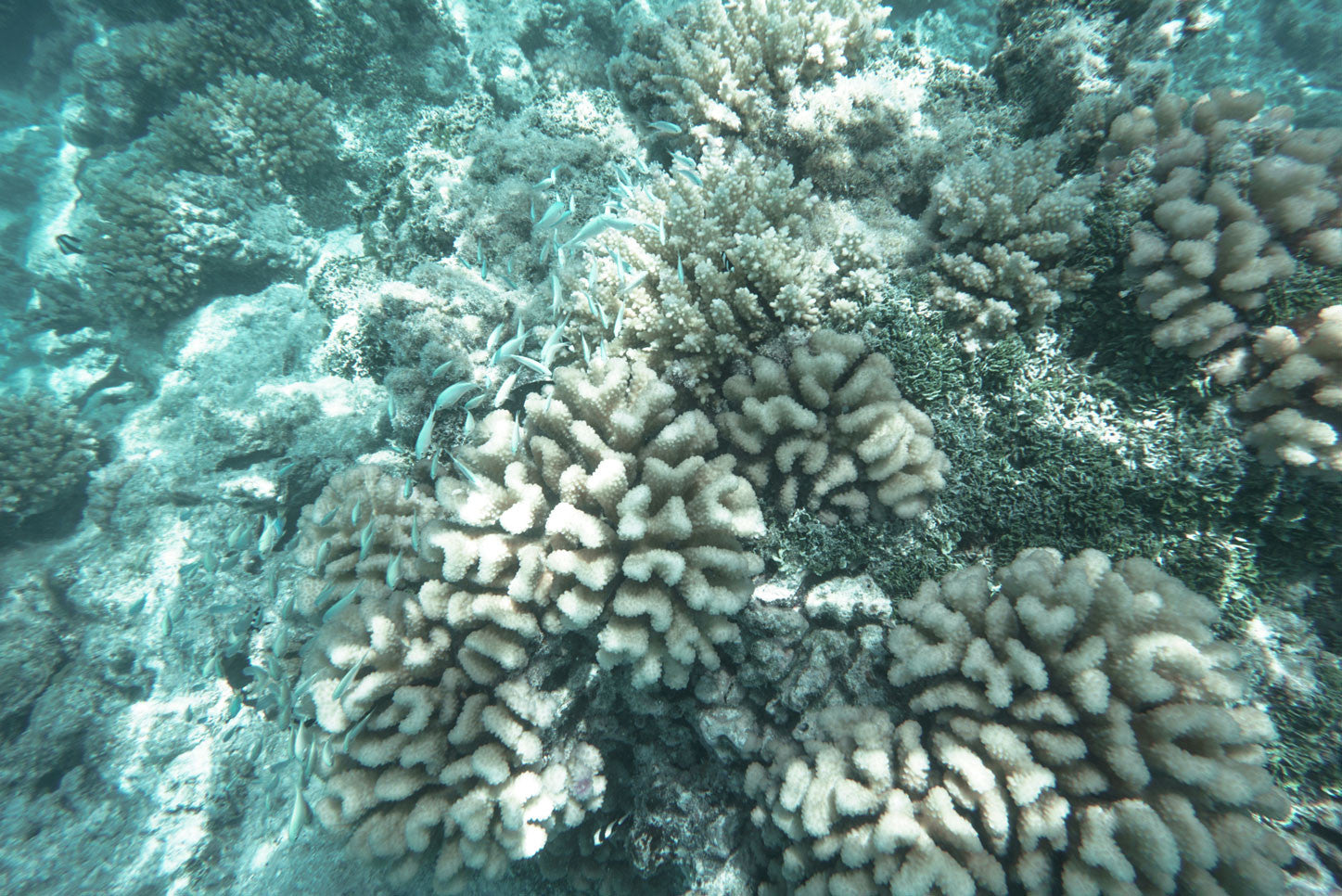HARVEST SEASON
A BLACK PEARL
FAKARAVA , TUAMOTO ATOLLS
Scroll to explore
The Story
A CONVERSATION WITH HUGO DARIEL
BLACK PEARL CULTIVATOR IN FAKARAVA
Hugo Dariel is a second generation pearl cultivator on the Tuamotu Atoll of Fakarava in the French Polynesia. The culture of pearling made its way to the atolls just over thirty years ago, with Hugo's parents serving as the pioneers on Fakarava. Although the pearl produced by the Polynesian black lip oyster, pinctada margeritifera, is relatively new to the pearl cultivation world, it is the only cultured pearl that nature works in mysterious ways to produce in a spectrum of hues, shapes and sizes.
Pearls are only
HUGO DARIEL, PEARL CULTIVATOR
cultivated by those
who have a true
passion for it.

S+O — WHAT MAKES FAKARAVA A STAND OUT AMONGST THE TUAMOTU ATOLLS?
Dariel — Fakarava remains among the prettiest atolls in the Tuamotu Archipelago. There is an abundance of fish, sharks, and other aquatic life around us without much habitable terrain on the atoll. There are only eight hundred of us living on the island. I believe that is the reason that UNESCO chose Fakarava, over the other atolls, for the biosphere reserve designation. It’s a place dominated by nature, and remains unspoiled.
S+O — HOW DID YOUR FAMILY BECOME INVOLVED IN PEARL CULTIVATION?
Dariel — My father started the first pearl farm on the atoll. He is originally from Paris, France, but came to Polynesia with my grandfather at the age of fourteen. When he was eighteen, he met my mother Havaiki. She was from Fakarava, and so they had the idea of opening the first pearl farm of the atoll in 1989. They ran the farm for about twenty-five years, and now it is my turn to take on the family business.
S+O — WHAT IS THE IMPORTANCE OF PEARL CULTURE HERE?
Dariel — Pearl is the only jewel that can be produced locally. Twenty years ago, pearl cultures were the primary source of income on the atoll. It was sort of an El Dorado of the Pacific. People were willing to pay a great sum for the pearls. Unfortunately, overproduction brought prices down, and very few people are still in that line of work. Only those with a true passion for pearl culture still do it. But it’s hard to make a substantial living. It’s a shame, because it was the type of work that fitted well with the locals and their lifestyle.


S+O — WHY WAS PEARL CULTIVATION SUCCESSFUL ON THE ATOLL?
Dariel — The first Polynesian pearl cultures started in the southern atolls, and the knowledge slowly headed north to Fakarava. It was successful because we have a bigger lagoon, and therefore more oysters can be cultivated at once.
S+O — WHY IS A LARGE AMOUNT OF LAGOON SPACE NECESSARY?
Dariel — There is about a fifty percent success ratio when it comes to harvesting oysters for pearls, so the more oysters you can cultivate, the better the chances of success are. In order to make a profitable business, you need to produce a large amount of pearls. With a smaller lagoon, you can still cultivate pearls, but you’ll have much less in the end.
S+O — DESCRIBE THE PROCESS FOR US.
Dariel — The whole process of creating a pearl takes about four years in total. The first step is to collect the Polynesian black-lip oysters, pinctada margaritifera, in their natural lagoon habitat which is mostly on the west side of the atoll. There’s a strong wind pushing plankton on the West, attracting black-lip oysters. We install nets at sea surface, then we patiently wait about four to six months. Hopefully, the oysters will have found shelter in our nets. Then, we carefully remove them from the nets with scissors. We bring those back to the farm, and supervise their growth for two years.
S+O — WHAT HAPPENS NEXT?
Dariel — Once the oysters reach maturity, it is time for the artificial seeding to take place. We use the Japanese culture technique that is well known all over the world. A machine carved nucleus, made by the Japanese, is seeded into the oyster. One oyster out of every twenty will be sacrificed during the process for its mantle piece. Then, the oysters are placed back into the water where we have to wait another two years to see the results. It is up to the oyster to do its magic after. And in reality, only half of these oysters will accept the operation and contain a pearl. The oysters that create the most astounding pearls will be put to use for another two years after that, in hopes that they will create another beautiful pearl.


S+O — WHERE IS THIS WORK DONE?
Dariel — Everything is done below the sea, around fifteen feet under water. Currently we have about two thousand oysters at work in the stages of cultivation. Although not extensive, we had decided to reduce the amount we were producing, and focus more on increasing the quality. Now we have prettier pearls all the time, but in smaller quantities.
S+O — WHAT IS THE SENTIMENT ON HARVEST DAY?
Dariel — Harvest day is always magical. It’s a moment years in the making. A day where you will finally see what the patience and passion has brought to fruition.



S+O — WHAT ARE THE CHARACTERISTICS OF THE BLACK-LIP OYSTER PEARL?
Dariel —The Polynesian black-lip oyster is truly a rare species. It’s the only species of oyster that can produce round, oval or baroque pearls in an array of colors. Other pearl cultures can only produce a one-colored, round pearl. It’s the only one where the final result is completely in the hands of nature. You never know what color or shape you will find.
S+O — HOW CAN ONE TELL THE QUALITY OF THE PEARL?
Dariel — It is only after the pearls are polished in our workshop that they reveal themselves fully. The quality is based on the amount of imperfections found on the surface of the pearl. The most perfect pearl would be perfectly round with a beautiful luster and hue as well as little to no imperfections, maybe one imperfection. In reality, only one percent of our harvest will ever be perfect. Out of two thousand oysters in cultivation, only twenty of them will likely contain a perfect pearl. Each of the pearls will be categorized and evaluated for pricing dependent on its attributes. This is what makes the job exciting, the search for the perfect pearl.
S+O — WHAT DO YOU DO ONCE A PERFECT PEARL IS FOUND?
Dariel — It’s truly wonderful when a perfect pearl is found after all of the work and waiting. We would usually keep it as a trophy for a few years before selling it. It’s truly a prize. When I look out into the lagoon, I know there’s a treasure awaiting.
When I look out
into the lagoon, I know
there’s a treasure
awaiting.
Credits
Photography by Brian Sokol
Video by Jamie Leilani Pelayo, Samuel Le Gall and Hélène Havard
Special Acknowledgements - Claire and Temoe of Pearl Havaiki
The Objects
Exclusive Edition 008 FAKARAVA CULTURED PEARL NECKLACE
The Polynesian black-lip oyster, pinctada margeritifera, is the only oyster in the world to produce pearls in varying hues, shapes and sizes. This pearl was formed over a period of four years of meticulous grooming and care, mostly taking place fifteen feet beneath the surface of one of the most beautiful lagoons of the South Pacific.
The Destination
FAKARAVA , TUAMOTO ATOLLS
Fakarava is the second largest atoll in the Tuamotu Atolls of French Polynesia. The atoll has received the UNESCO biosphere reserve designation for its pristine waters and flourishing aquatic life. Only eight hundred people live on the island with one small village and thoroughfare through the narrow strip of habitable land. A pleasant hour and half long flight from Pape’ete or, if preferred, a yacht or sailboat cruise, transports one to the enchanting land where the local sharks are as friendly and mellow as the local Fakaravans. Fakarava remains untouched and tourism is relatively under-developed with only a handful of small pensions and restaurants on the island.



